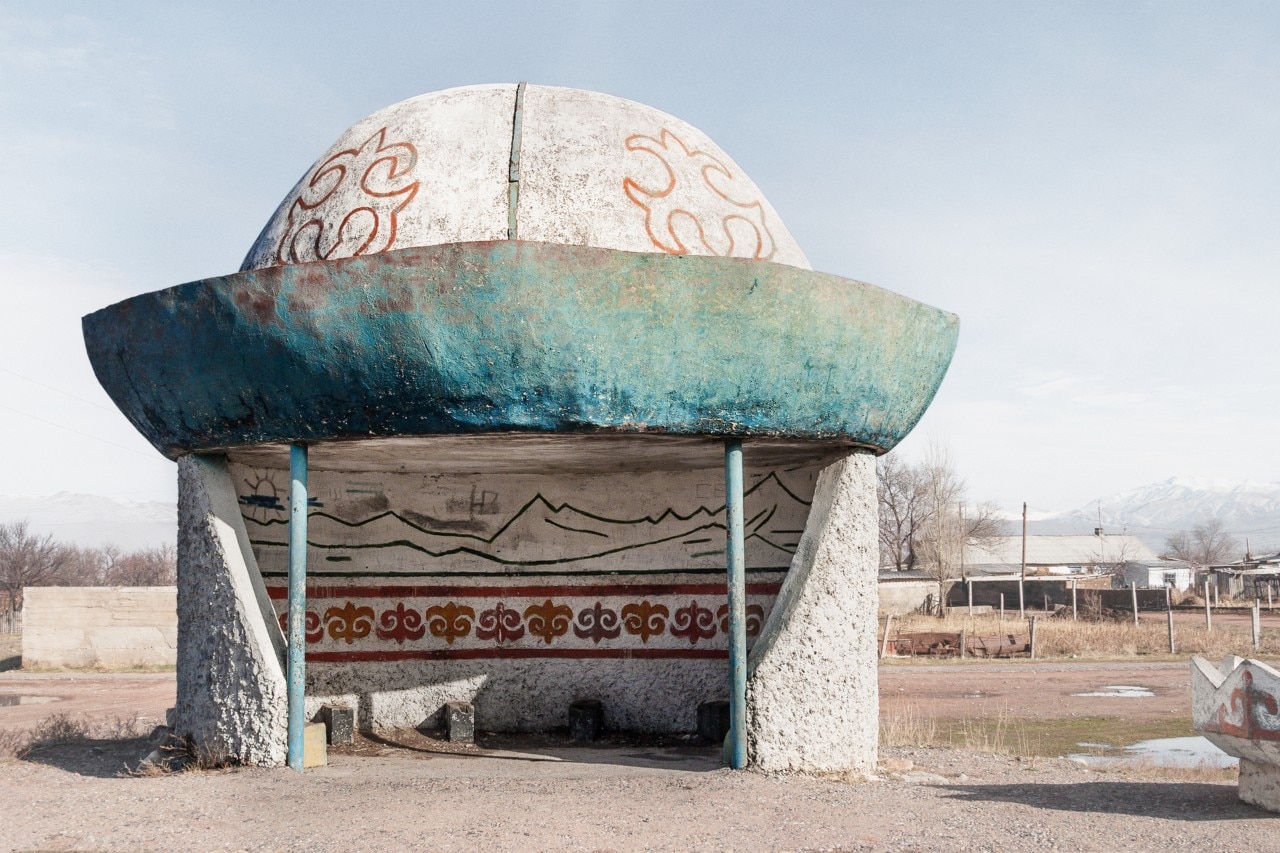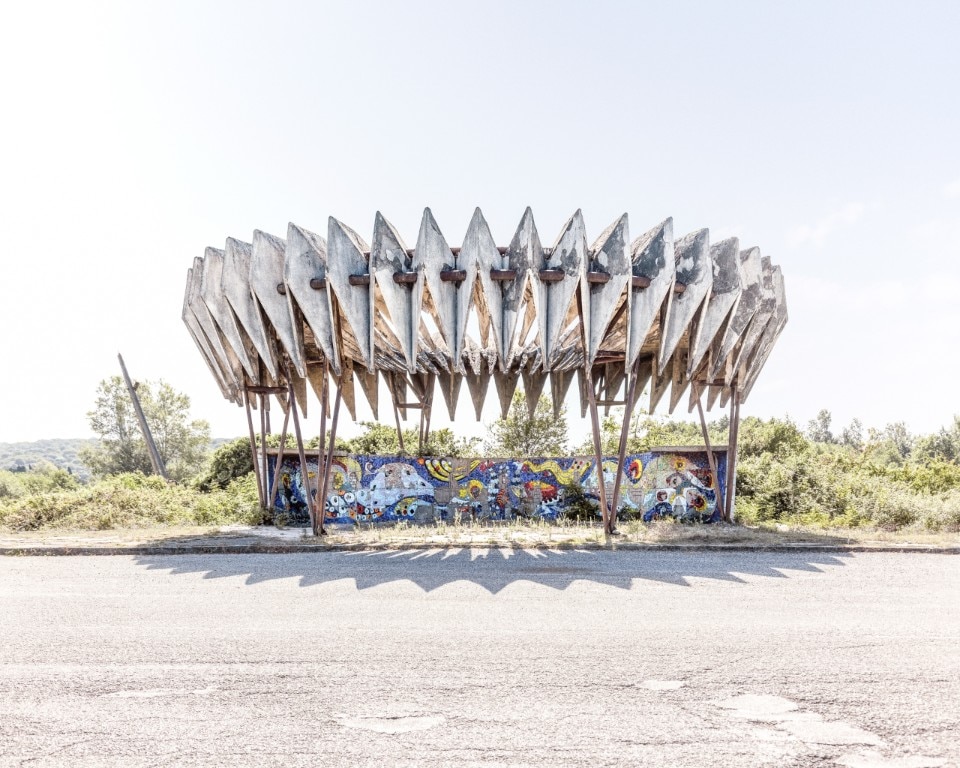A bicycle, a camera, and a mission to take one picture every hour. What might sound like a game was, in fact, the start of a journey that would take Canadian photographer Christopher Herwig across continents. More than twenty years later, the project he started back then continues to captivate audiences. His collection of photographs – now compiled into two books and a documentary – showcases some of the most unusual and striking bus stops across the former Soviet Union. Thanks to his work, these overlooked structures have gained international recognition.
“I was fascinated by the fact that they were built during the Soviet era because, up until then, my impression had been – quite simplistically – that everything was standardized and soulless,” Herwig explains in an interview with Domus. While Constructivism left a significant mark on Soviet architecture, with iconic projects by figures such as Tatlin and Mel’nikov, when most people think of 20th-century Soviet design, they imagine massive concrete buildings and imposing monuments.

Yet, in a landscape where socialist rule often stifled individual creativity, bus stops seemed to exist in a space so marginal that they became a surprising outlet for artistic expression. They are colorful, eccentric, and wildly diverse – ranging from raw concrete structures to intricate mosaics, with some resembling medieval towers and others shaped like giant birds.
For me, it was worth it even if no one cared or if it wasn’t a professional success. I did it my own way, and I think that’s why it resonated with people – they saw something authentic and different.
Christopher Herwig
While these structures still reflect Soviet ideologies – as architecture critic and historian Owen Hatherley explains in the second volume of Soviet Bus Stops – they also reveal the ingenuity and personality of their designers. “Unfortunately, most of the artists behind these works remain unknown, but we’ve managed to track down a few,” says Herwig, who sought out their creators for a documentary released twenty years after the project first began. One of the most memorable encounters was with Jüri Konsap, one of the designers of the bus stop known as Spider, built in the 1970s in the small Estonian town of Niitsiku. “The bus stop was the result of the new road. We didn’t wait for orders from anywhere. It was created for the local people. Nobody saw it as a Soviet thing. It was ours,” Konsap recalls.

Today, some of these bus stops remain in use, maintaining their original form. Others stand in remote corners of the former USSR, in places once served by public transport but now abandoned – silent witnesses to shifting populations over time. Many are at risk of demolition, making Herwig’s work even more valuable as a record of these sculptural landmarks. A project that, as it turns out, never really ended.
“The bus stop project has been a huge part of my life – something I thought had ended in 2003, then again several times over the years, but somehow it always found a way to continue,” Herwig reflects. “I love finding new designs, the travel, the research itself. For me, it was worth it even if no one cared or if it wasn’t a professional success. I did it my own way, and I think that’s why it resonated with people – they saw something authentic and different.”

Throughout his career, Herwig has worked with National Geographic, the United Nations, and CNN, photographing the forests of Sierra Leone, fishing villages in Ghana, nomadic herding families in the Alps, and Syrian bazaars. “I’m not a big fan of posed portraits because they often feel staged and too perfect. I prefer to wait until people almost forget I’m there, observing their movements and looking for that moment when they are in perfect balance with the rest of the scene,” he says. He strives to avoid forced compositions in his work. “We often want images to have a clear and immediate message, but reality doesn’t always work that way. You can’t always fit people and places into simple, defined categories,” especially when reality defies stereotypes and expectations.
These days, Herwig is in Sri Lanka, where he and his wife have been living for the past three and a half years. His latest project focuses on “the decorated trucks and tuk-tuks of South Asia, exploring the theme of the ‘poetry of the road’ and celebrating the individual art and creativity that appears in the most unexpected places.” Despite its differences, this project shares a common thread with the bus stops: the search for originality in the most ordinary things.
When asked if there’s a place he dreams of visiting, Herwig replies, “For me, the greatest joy isn’t in visiting a long-dreamed-of destination, but in stumbling upon something unexpected. That can happen anywhere – even in my own neighborhood.”

Franke presents “The House of Well-Living” at Fuorisalone
With a multi-sensory installation, Franke will welcome visitors to its flagship store during Milan Design Week and present the year's new products.











